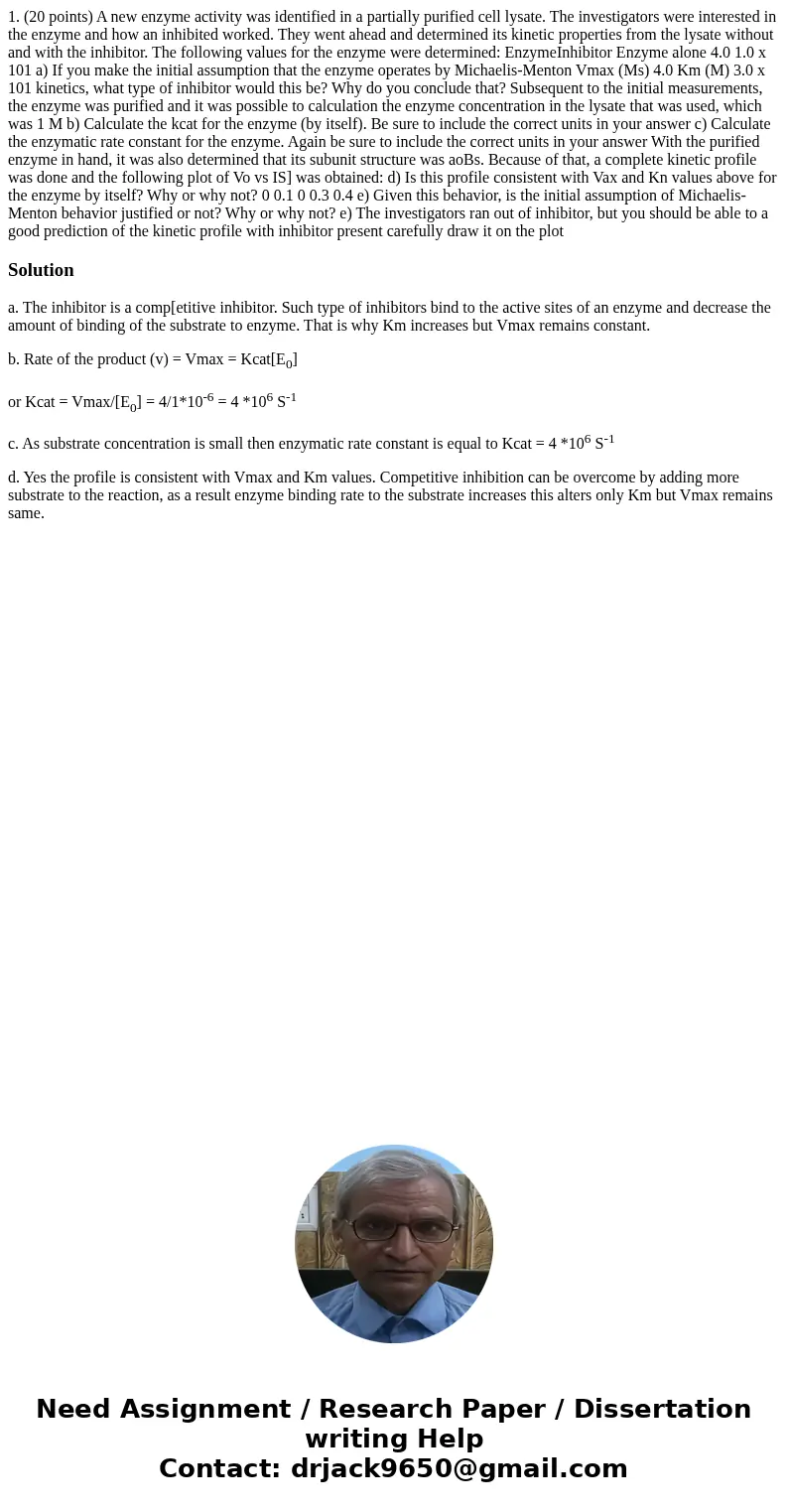1 20 points A new enzyme activity was identified in a partia
1. (20 points) A new enzyme activity was identified in a partially purified cell lysate. The investigators were interested in the enzyme and how an inhibited worked. They went ahead and determined its kinetic properties from the lysate without and with the inhibitor. The following values for the enzyme were determined: EnzymeInhibitor Enzyme alone 4.0 1.0 x 101 a) If you make the initial assumption that the enzyme operates by Michaelis-Menton Vmax (Ms) 4.0 Km (M) 3.0 x 101 kinetics, what type of inhibitor would this be? Why do you conclude that? Subsequent to the initial measurements, the enzyme was purified and it was possible to calculation the enzyme concentration in the lysate that was used, which was 1 M b) Calculate the kcat for the enzyme (by itself). Be sure to include the correct units in your answer c) Calculate the enzymatic rate constant for the enzyme. Again be sure to include the correct units in your answer With the purified enzyme in hand, it was also determined that its subunit structure was aoBs. Because of that, a complete kinetic profile was done and the following plot of Vo vs IS] was obtained: d) Is this profile consistent with Vax and Kn values above for the enzyme by itself? Why or why not? 0 0.1 0 0.3 0.4 e) Given this behavior, is the initial assumption of Michaelis-Menton behavior justified or not? Why or why not? e) The investigators ran out of inhibitor, but you should be able to a good prediction of the kinetic profile with inhibitor present carefully draw it on the plot 
Solution
a. The inhibitor is a comp[etitive inhibitor. Such type of inhibitors bind to the active sites of an enzyme and decrease the amount of binding of the substrate to enzyme. That is why Km increases but Vmax remains constant.
b. Rate of the product (v) = Vmax = Kcat[E0]
or Kcat = Vmax/[E0] = 4/1*10-6 = 4 *106 S-1
c. As substrate concentration is small then enzymatic rate constant is equal to Kcat = 4 *106 S-1
d. Yes the profile is consistent with Vmax and Km values. Competitive inhibition can be overcome by adding more substrate to the reaction, as a result enzyme binding rate to the substrate increases this alters only Km but Vmax remains same.

 Homework Sourse
Homework Sourse